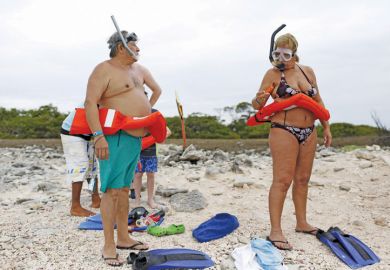In October 1781, General Cornwallis surrendered at Yorktown, Virginia, bringing formal hostilities between Britain and its former colonies to an end. Several months later, however, in March 1782, David Fanning, a loyalist farmer from South Carolina, embarked on a "small scourge" of Randolph County, North Carolina, along with a small band of loyalist and Cherokee Indian allies. They burnt dozens of plantations, captured several rebels and hanged many others. Fanning was unrepentant. He claimed: "Their Never was a man thats Been In Arms on Either Side But what Is gilty of Some of the Above Mentioned Crimes."
Few observers appreciated the full scale and human cost of the war within the new states, or the divisiveness of the contest. Only during the civil war 100 years later did a greater percentage of the population fight each other, or perish in any single conflict. One historian has calculated that the 25,000 service-related deaths alone in the eight-year war is the per capita equivalent of about 2 million deaths in the US today. This estimate does not include the hundreds of civilian casualties, or the thousands of enslaved Americans who perished trying to flee to the British. When you add to these figures the thousands of displaced Native Americans and loyalists who fled the colonies, widowed wives, crippled soldiers and ruined families, black and white, the war for independence was, as Fanning's narrative reminds us, one of the costliest, bloodiest and most divisive wars in American history.
In The American Revolution , Ray Raphael brings this reality into sharp focus. A popular historian who has written on diverse subjects, he sets out to synthesise the best scholarship of the past 30 years or so on the social and political history of the American revolution, and bring it to the attention of a wider audience. In this he succeeds. His lucid prose is compelling and evocative. Published in the US under the title A People's History of the American Revolution : How Common People Shaped the Fight for Independence , Raphael's work is clearly focused on, and for, the people. The book is accessible for students and there will soon be a teacher's guide available online at www.thenewpress.com.
As might be expected, readers will find few references to more familiar names and iconographic images. Raphael has boldly shifted the lens of history away from Franklin, Jefferson and Washington, and on to lesser-known people such as Joseph Harris, James Collins, Kanonraron, Mary Donnelly and Electra Campfield. Distinct chapters deal separately with political and then military mobilisation, women, loyalists, African-Americans and, in a particularly illuminating section, Native Americans.
Throughout, Raphael weaves together the stories of ordinary people caught up in extraordinary events in a narrative that leaves the reader in no doubt that the war was messy, complicated and generally debilitating for most of its participants. There are few heroes in the book. Patriot militia who fought against the British often found themselves pitted against their neighbours. Women who helped to raise supplies for the Continental army sometimes traded with the enemy to make ends meet. Soldiers who enlisted in the patriot army were often hanged when they protested against the deplorable conditions under which they had to fight while their countrymen traded away desperately needed supplies for a healthy profit.
Yet if Raphael successfully synthesises the work of a generation of historians who have expanded our understanding of the origins of the war for independence from the perspective of ordinary Americans, he also reveals the limitations of this work. It is still unclear just what the sum total of these diverse experiences amounted to. In what ways, exactly, did common people really shape the conflict and its consequences? The material for such an account is now much richer than it was 30 years ago, but few historians have tried to integrate this social history with the larger political narrative. It remains to be done.
Moreover, Raphael runs out of historians on whom to rely when it comes to the years immediately following the war. Study of the 1780s is dominated by too much attention to the origins of the Constitution. The social history of the period has still to be uncovered to the depth that Raphael's book manages for the war years. That neglect also hampers any effort to measure the impact of the conflict on the lives of ordinary people. We are not told enough about how the war actually changed people's lives, and whether it made much of a difference in the long run.
Though the ultimate meaning of the war for the participants might remain obscure, we do begin at least to glimpse the direct and indirect impact of their participation in the pages of Raphael's work. So many African Americans flocked to join Governor Dunmore of Virginia when hostilities began there, for example, that he issued a proclamation freeing any slaves belonging to rebel masters, created an "Ethiopian regiment" and armed the freedmen to fight against their former masters. Dunmore's move, prompted by critical and often painful decisions made by enslaved Virginians throughout the colony, infuriated even conservative planters in Virginia and turned many potential loyalists into ardent patriots. To the north of Virginia, poor white men who joined the Philadelphia militia in 1775-76 helped to spark a provincial congress that unseated Pennsylvania's ruling representatives, expanded the suffrage from 50 to 90 per cent of the free adult males in the state, and called for a convention to write one of the most radical state constitutions in the country's history.
Raphael shows us that the conflict was more than just a bloody and messy civil war. For British readers in particular, this book will be immensely helpful in showing how and why the war for American independence became, in American eyes, a revolutionary war.
Michael A. McDonnell is lecturer in American studies, University of Wales, Swansea.
The American Revolution: A People's History
Author - Ray Raphael
ISBN - 1 86197 322 5
Publisher - Profile
Price - £20.00
Pages - 386
Register to continue
Why register?
- Registration is free and only takes a moment
- Once registered, you can read 3 articles a month
- Sign up for our newsletter
Subscribe
Or subscribe for unlimited access to:
- Unlimited access to news, views, insights & reviews
- Digital editions
- Digital access to THE’s university and college rankings analysis
Already registered or a current subscriber?



